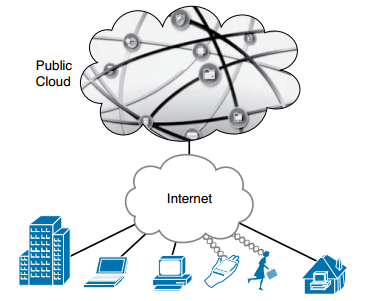210-451 CCNA Cloud CLDFND FAQ – Cloud Heights: Deployment Models
Q1. Which of the following represents the deployment models described by NIST?
a. Public, private, hybrid
b. SaaS, IaaS, PaaS
c. Private, public, community
d. On-premise, off-premise, managed
e. Public, private, community, hybrid
Q2. Which option best describes “shadow IT”?
a. Hackers accessing public cloud resources using the identifications of employees of an organization
b. Employees attacking resources from competitors that are sharing resources from the same public cloud
c. Employees from an organization deploying resources in a cloud without the knowledge of the IT department
d. Employees of a cloud provider accessing customer data
e. Denial-of-service attacks to slow performance of applications deployed on public clouds
Q3. Which of the following cost risks can be associated with public cloud usage? (Choose all that apply.)
a. Lack of forecasting modeling
b. Workload sprawl
c. Application performance issues
d. CAPEX model

Figure: Public Cloud
Q4. According to NIST, what is the definition of private cloud?
a. A cloud deployment provisioned for exclusive use by a single organization
b. A cloud deployment managed by a single organization
c. A computing deployment located inside a single organization’s data center
d. A cloud computing deployment managed and used by a single organization
e. A cloud computing deployment managed, used by a single organization and also located at the same organization’s data center
5. Which of the following options contains only regulatory compliance standards?
a. PCI DSS, FISMA, NIST
b. HIPAA, PCI DSS, SOX
c. IEEE, IETF, ANSI
d. ANSI, FedRAMP, Basel
e. SOX, Intercloud, HIPAA
Q6. What is “cloud bursting”?
a. A cloud deployment exhausts its infrastructure resources.
b. An organization can provision public cloud services to use during periods of stress of its internal IT resources.
c. Two public cloud providers work in conjunction to load balance requests from a consumer.
d. A private cloud can transform physical workloads into virtual workloads.
Q7. Which of the following represent challenges of hybrid cloud implementations? (Choose all that apply.)
a. Inconsistent cloud architectures
b. Incompatible networking and security policies
c. Lack of encryption standards
d. Requirement for application reconfiguration when an application is migrated from one cloud to another
e. Few service offerings
Q8. Which of the following are considered components of the Cisco Intercloud? (Choose all that apply.)
a. Private clouds
b. Public clouds
c. Cisco Powered Partner Clouds
d. Cisco Intercloud Services
Q9. Which of the following is correct about Cisco Intercloud Fabric? (Choose all that apply.)
a. It is agnostic to server virtualization technology.
b. It provides encryption only for traffic that is traversing the Internet.
c. It does not allow migration of workloads toward a private cloud.
d. It has business and provider complementary solutions.
Q10. Which of the following is not considered a service of Cisco Intercloud Fabric?
a. VM portability
b. Hybrid cloud management and visibility
c. Cloud networking
d. Community cloud
e. Cloud security
More Resources